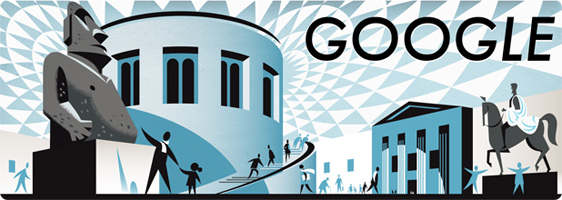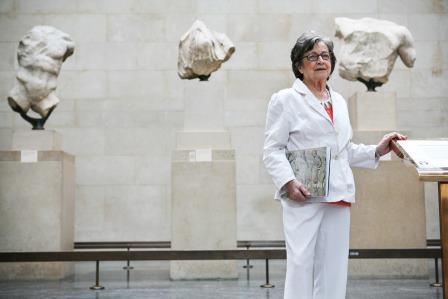 Google Doodle celebrated today, Wednesday 15th January 2014 with a ‘doodle’ of the atrium of the British Museum. Today marks this outstanding institution‘s 255th anniversary with over 8 million outstanding objects and an equally impressive 6.7 million visitors.
Google Doodle celebrated today, Wednesday 15th January 2014 with a ‘doodle’ of the atrium of the British Museum. Today marks this outstanding institution‘s 255th anniversary with over 8 million outstanding objects and an equally impressive 6.7 million visitors.
It is at time like this that the millions of supporters for the reunification of the Parthenon sculptures can but reflect on the unfairness surrounding the continued division of the Parthenon sculptures.
Most days we are bombarded by the unfairness of those hungry, homeless, vulnerable…… those killed for senseless reasons, corruption, dishonesty, the list goes on and a constant reminder of all that is not right in our fragile world. Yet in the case of priceless cultural objects that measure one metre high and 160 metres long, divided mainly between two civilised and democratic cities - London and Athens - housed in mainly two superb museums, the British Museum and the Acropolis Museum. ‘We’ - the ‘we’ that know best, that care for culture, that are in charge, that can make a difference - cannot seem to find a way forward.
Imagine how wonderful it would be to create unity and be able to celebrate it whilst we still can.

For those supporters and campaigners that have passed away over the centuries all the way to those that died in last few decades, remembering Melina Mercouri and Christopher Hitchens - octogenarian Eleni Cubitt, founder of the British Committee for the Reunification of the Parthenon Marbles has this to say: “We live in difficult times, facing many difficult issue, some perhaps so big, they may not be resolved for decades to come and certainly after my time. The continued fragmentation of the Parthenon marbles need not be an unresolved matter. The superlative new Acropolis Museum is the perfect place to reunite the surviving fragmented pieces of this peerless work of art.”
By shifting attention onto a more positive path and by concentrating on the benefits of reunification, the acclaimed British Museum and its well respected director, Neil MacGregor, would put right a very old wrong and in so doing, they could be justifiably proud. It would demonstrate strong ethical and moral leadership, proving to the global community that there is a way forward for the reunification of the Parthenon sculptures.




